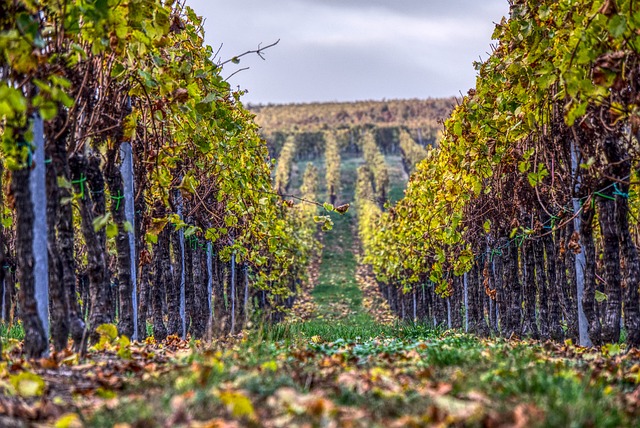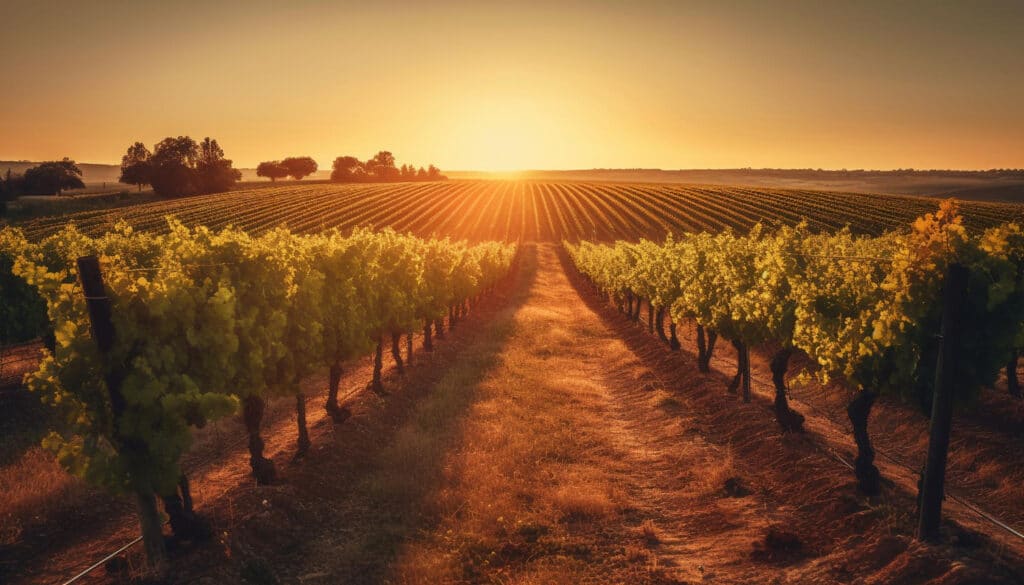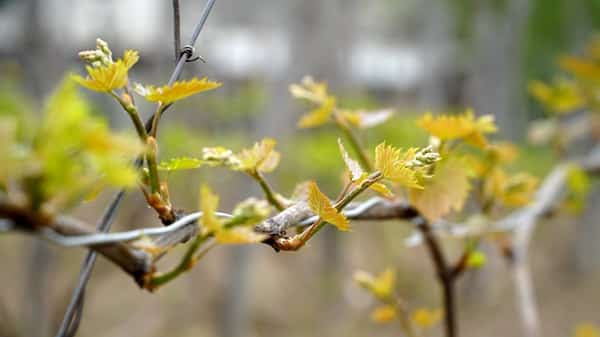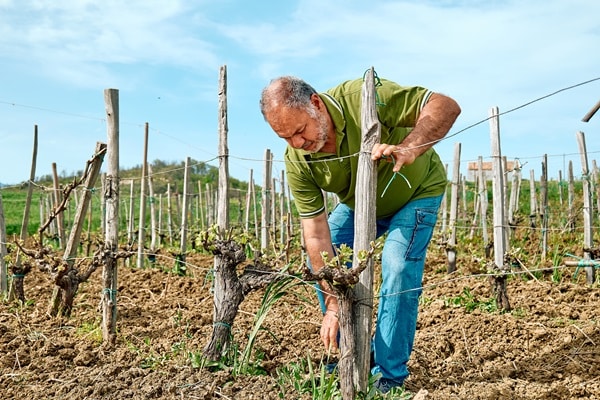The vine, the emblematic plant of viticulture, fascinates many enthusiasts who dream of growing their own grapes. However, there is no simple answer to the question “Can you plant vines everywhere? Many factors come into play, from regulations to climatic conditions and growing techniques. Let’s take a closer look at the various aspects to consider before embarking on vine planting.
Regulations: a strict framework for planting vines
In France, the planting of vines is subject to precise regulations. Contrary to what you might think, you can’t plant vines just anywhere, or just anyhow. Planting authorizations are managed by FranceAgriMer, the national establishment for agricultural and marine products.
To plant vines for wine production, it is necessary to obtain planting rights. These authorizations are granted on the basis of several criteria, including :
- Area to be planted
- The grape variety
- Geographical indication (GI) of the plantation area
It’s important to note that the rules differ depending on whether you wish to plant for commercial production or for personal consumption. In the case of commercial planting, the procedures are more complex and the authorizations more stringent.

The planting authorization system
Since 2016, the European Union has introduced a new system of planting authorizations, replacing the old system of planting rights. In France, FranceAgriMer is responsible for managing these authorizations, which are essential for any new vine planting.
General principles
Prior authorization is required for all new vine plantations. This process is crucial to ensuring responsible management of resources and guaranteeing the quality of the wines produced. Here are the key principles:
- Prior authorization: all vine planting must be authorized before it can begin. This makes it possible to control the area planted and preserve the terroirs.
- Free of charge and non-transferable: authorizations are free of charge and cannot be transferred from one winegrower to another. This means that each plantation is strictly linked to its owner.
- 3-year validity: once granted, the authorization is valid for 3 years, during which time the applicant must carry out the planting.
Authorization types
There are several types of authorization that winegrowers can apply for:
-
New planting authorizations: these authorizations concern the planting of new vines on previously uncultivated plots. This is a fundamental step in the development of new vineyards.
-
Authorizations for replanting: when vines are uprooted, it is possible to apply for authorization to replant on the same plot. This is often necessary to replace less productive grape varieties with more efficient ones.
-
Authorizations resulting from the conversion of rights: these authorizations enable pre-existing planting rights to be converted into new planting authorizations. This offers flexibility to winegrowers wishing to adapt their production to new market trends or consumer preferences.

Application procedure
To obtain a planting permit, follow these steps:
- Apply to FranceAgriMer, generally between January and April each year.
- The application must specify the area to be planted and the location of the plots.
- FranceAgriMer examines applications according to eligibility and priority criteria.
- Authorizations are granted according to availability, with an annual ceiling set at national level (currently 1% of the French wine-growing area).
Eligibility and priority criteria
FranceAgriMer uses a scoring system based on a number of criteria when examining applications for authorization to plant vines. These criteria are designed to encourage high-quality, environmentally-friendly viticulture, and to support generational renewal in the wine sector.
-
Compliance with PDOs and PGIs: projects must comply with the specifications of Protected Designations of Origin (PDOs) and Protected Geographical Indications (PGIs), guaranteeing the quality and authenticity of the wines produced.
-
Contribution to the environment: sustainable practices and the preservation of biodiversity are encouraged. Projects that minimize environmental impact receive a higher rating.
-
Organic commitment: Priority is given to applications from farms committed to organic production rules, favoring the absence of chemicals.
-
Support for young farmers: projects initiated by young farmers are encouraged to promote diversity and sustainability in the winegrowing sector.
Geographical restrictions
Geographical restrictions play a crucial role in the management of vineyard plantings in France, particularly in areas benefiting from specific protection, such as the Appellations d’Origine Protégée (AOP).
In these regions, all vine planting must comply with the appellation’s specifications, ensuring that the quality of the wine produced reflects the unique characteristics of the terroir.
This means that authorized grape varieties, growing and winemaking methods must comply with the standards set to maintain the reputation and integrity of the wines.
In addition, some regions may impose additional restrictions to preserve the balance of the local market. These may include limitations on planting area, or rules on which grape varieties can be grown.
These measures have been put in place to avoid market saturation by similar wines, thus ensuring a diversity of wine products and the sustainability of the farms.

In this context, winegrowers have to navigate carefully through the regulations to ensure that their applications for authorizations are compliant. Whether planting vines on a new plot or replanting after grubbing-up, each step must be carried out in compliance with the geographical rules and rights in force. By cultivating their grapes with care, winegrowers contribute to the richness of French viticulture, while guaranteeing the quality of the wines that grace the tables and vats of their farms.
Special case of vines for family consumption
In France, regulations governing vines for family consumption are less stringent than for commercial plantings. Individuals wishing to plant vines for their own consumption can do so up to a surface area of 10 ares, or 1000 m², without the need for specific authorization. This flexibility enables wine lovers to grow their own grapes and produce their own wine directly from their own garden or plot.
However, if the planted area exceeds 10 ares, a declaration must be made to the Direction Départementale des Territoires (DDT). This procedure is designed to control planting and ensure that viticultural practices comply with sustainability and safety standards.
It is important to note that production from these family vineyards cannot be marketed. This means that private individuals cannot sell wine made from their grapes, whether from traditional or new varieties. These regulations are designed to protect the professional wine industry, while allowing enthusiasts to grow plants for their own use.
Penalties for non-compliance
Failure to comply with regulations concerning vine planting in France can result in severe penalties designed to preserve the integrity of the wine industry. When a winegrower plants vines without obtaining the necessary authorizations, or fails to comply with the established conditions, a number of consequences can arise.
Firstly, administrative fines may be imposed, which vary according to the seriousness of the offence. These fines are designed to deter winegrowers from circumventing the rules laid down for planting vines, and to ensure that wine production meets quality standards.

What’s more, if vines have been planted illegally, the authorities can order them to be uprooted. This drastic measure not only affects vine plants, but also grape production for years to come, directly impacting the winegrower’s ability to produce wine.
Finally, failure to comply with regulations can result in temporary or permanent exclusion from European winegrowing subsidies. These aids are essential for many winegrowers, as they provide financial support for wine production, land maintenance and the development of new varieties. Exclusion can therefore have significant economic consequences, affecting not only the viability of winegrowing operations, but also the diversity and quality of wines produced in France.
Choice of planting zones
The choice of vine planting areas is a crucial step for any winegrower wishing to succeed in wine production. In France, various factors must be taken into account when selecting a location for planting vines. Soil orientation, climate and access to water are all decisive factors in ensuring optimal plant growth.
Climatic and geographical factors
Climate plays a fundamental role in the success of wine-growing plantations. The grape varieties chosen must be adapted to the climatic conditions of the region. For example, some grape varieties prefer warm climates, while others, such as certain white varieties, can thrive in cooler areas. Topography and soil quality also influence root development and vine health.
However, even in areas renowned for their suitability for planting vines, risks such as frost can occur. This is where the importance of the anti-freeze tower comes in. This tool is essential for protecting plants from extreme temperatures during the winter months. By using an anti-freeze tower, winegrowers can reduce the risk of frost on their vines, enabling better-quality grapes to be produced.
Link with authorizations and regulations
Before starting any planting, it is necessary to obtain the appropriate authorizations, especially if you plan to grow vines in protected areas. Permit applications must comply with current legislation, including regulations governing Protected Designations of Origin (PDOs) and Protected Geographical Indications (PGIs). This ensures that plantings comply with standards of quality and diversity in wine production.
Expanding planting options
The use of frost protection towers can also broaden planting options. By offering protection against frost, these devices enable winegrowers to plant vines in areas that would otherwise be considered at risk. This opens the door to new varieties and grape varieties, enriching the region’s winegrowing diversity. Winegrowers can experiment with less common plants and adapt their production to changing consumer tastes.

